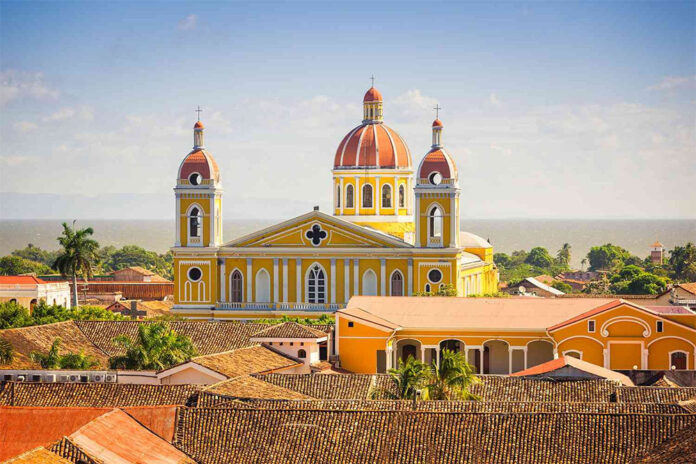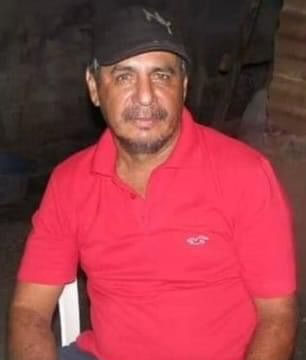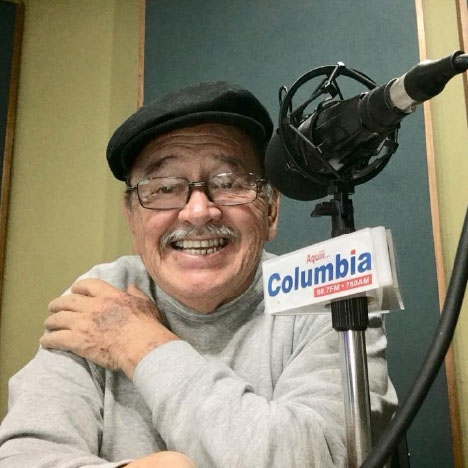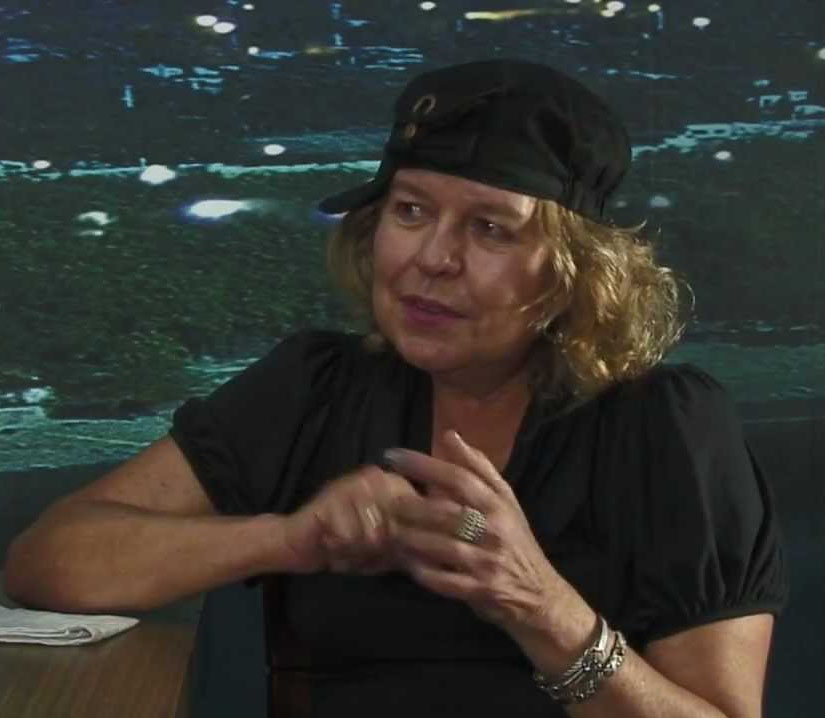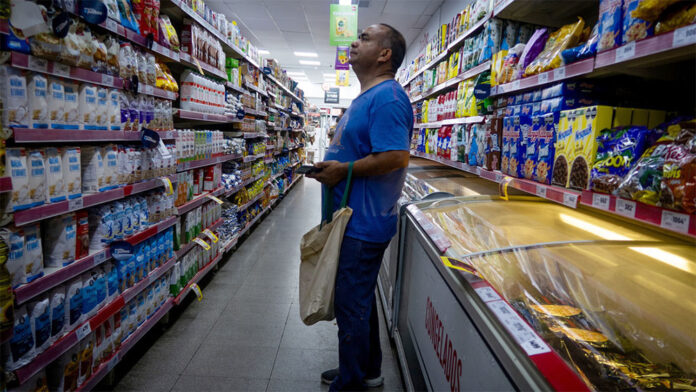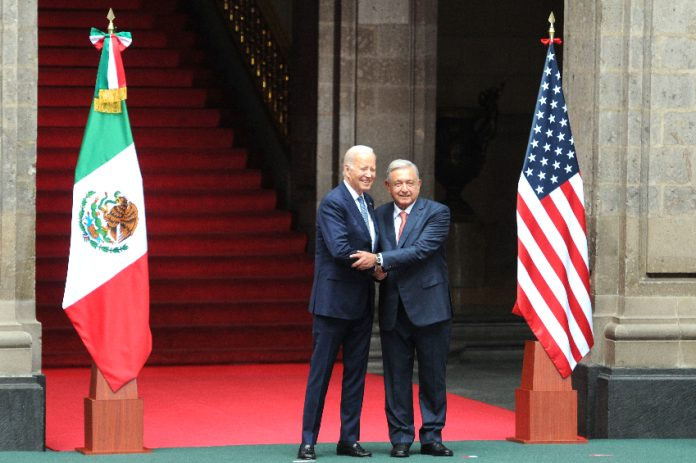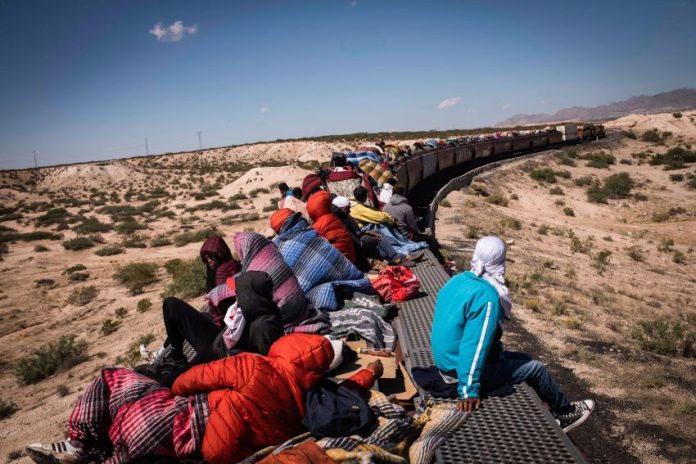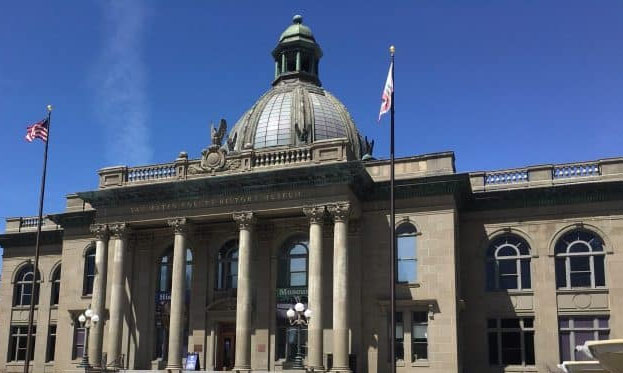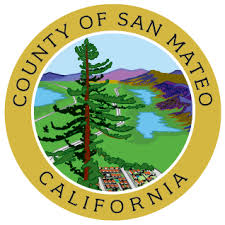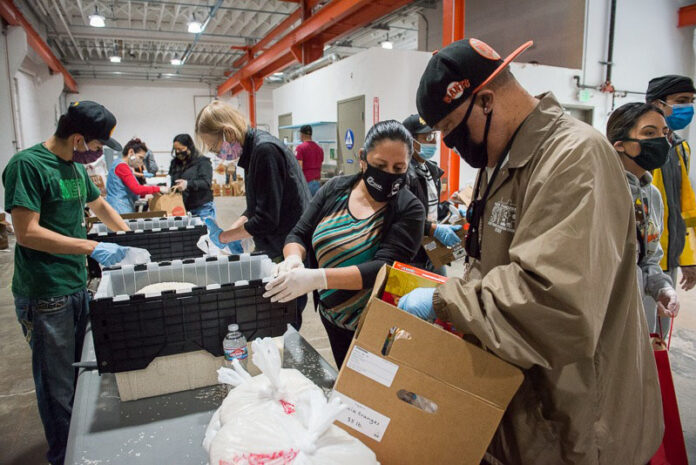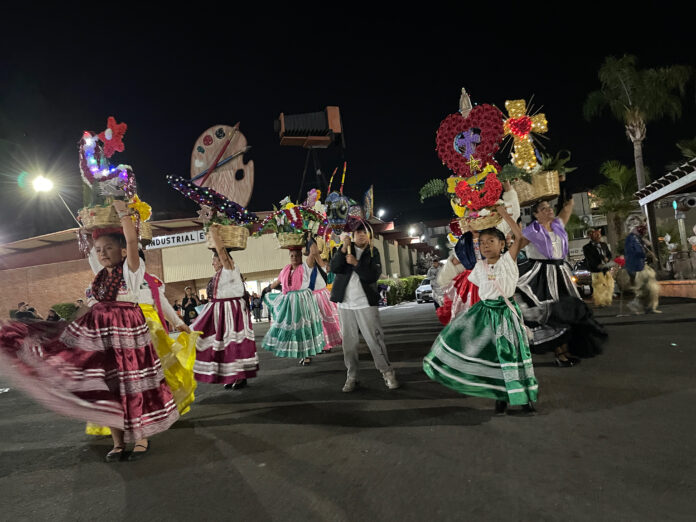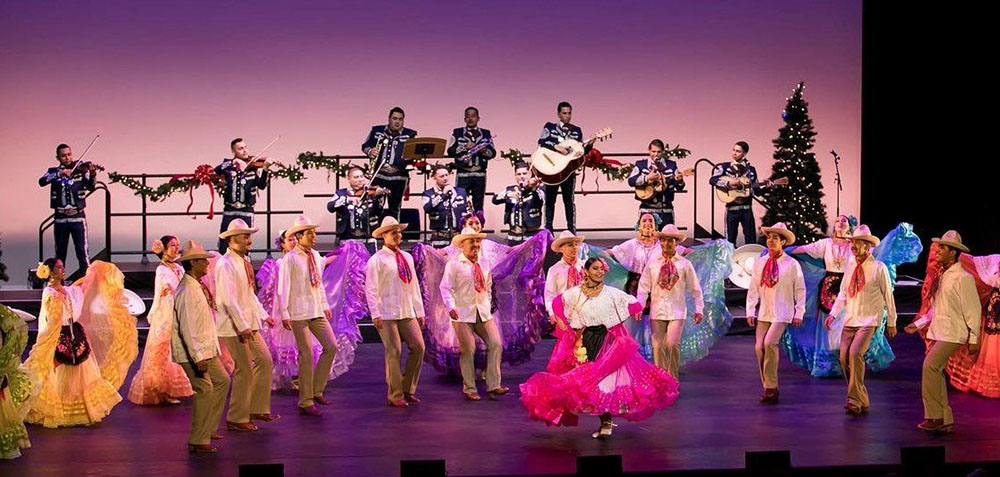Text and photo by David Bacon
On December 1 the Centro Binacional de Desarrollo Indigena Oaxaqueña (the Binational Center for Oaxacan Indigenous Development) celebrated its 30th anniversary. Dancers, musicians, gigantes and diablos led several hundred indigenous Oaxacan families, together with a handful of community supporters, as their procession made its way out of the Hall of Industry, and then through the Fresno County Fairgrounds.
The Centro is the sister organization of the Frente Indigena de Organzaciones Binacionales (Indigenous Front of Binational Organizations). Both were established in the early 1990s, and have chapters and offices throughout the communities in rural California where Oaxacan migrants have settled.
Thirty years ago few could have predicted the growth in the political presence of California’s Oaxacan community. Today dozens of people staff four CBDIO offices, speaking seven indigenous Mexican languages. Building that base through those years helped the community survive when the pandemic hit. CBDIO and FIOB activists distributed food to keep people eating.
In these photographs Oaxacan community activists show their deep roots – the culture of small indigenous towns in Mexico has been reproduced and is celebrated in California, 2,000 miles north. In the quotes below leaders of FIOB and CBDIO explain the context of this work and its origins.
The late Rufino Domínguez Santos was a co-founder of both FIOB and CBDIO, together with Gaspar Rivera Salgado, director of the Center for Mexican Studies at UCLA. Oralia Maceda, who heads the CBDIO office in Fresno, has been an organizer with FIOB for many years.
Rufino Domínguez Santos, Communities Without Borders (Cornell University/ILR Press, 2006): “Indigenous Oaxaqueños understand the need for community and organization. When people migrate from a community in Oaxaca, in the new places where they settle they form a committee comprised of people from their hometown. They are united and live near one another. This is a tradition they don’t lose, wherever they go.
Beyond organizing and teaching our rights, we try to save our language. Even though 500 years have passed since the Spanish conquest, we still speak it. We are preserving our way of dancing, and rescuing our lost beliefs — that nature is something sacred for us, just as it was for our ancestors.”
Rufino Domínguez Santos – The Right to Stay Home: How US Policy Drives Mexican Migration (Beacon Press, 2013):
“The labor of migrants in the U.S. has been used throughout its history. They tell us to come work, and then when there’s an economic crisis, we’re blamed for it. This policy of attacking migrants has never stopped in the United States. They accuse us of robbing other people’s jobs, and our rights are not respected.
But neither Republican nor Democratic administrations have acted to pass legislation to legalize migrants, and this is the solution to the problem. They’ve done nothing. Instead, we’ve seen a policy of deporting migrants, of imprisoning them unjustly. This doesn’t accomplish anything. We feel like we’re shouting at a wall because we can’t change any of this.”
Oralia Maceda – Communities Without Borders (Cornell University/ILR Press, 2006):
At first there were no women involved in FIOB. “Rufino asked me to share my experiences in Oaxaca, and we started going to different cities – Fresno, Selma, Santa Maria, and Santa Rosa. Once we had a women’s conference, but there were more men than women. We encouraged them to bring their wives since it is important for all people to know their rights.
Today, women sometimes participate more than men. The biggest obstacle for women is the lack of time. They have to work in the fields, and take care of their families. They don’t have childcare. When they come to meetings they worry about their kids and get distracted. Transportation is much more difficult here. In Oaxaca I can take a bus anywhere. Here there is no transportation in rural areas.
I believe men have to be more conscious of women’s needs, so they can participate. But it is women’s responsibility to find out how and get involved. I told my mom to not to ask me again to quit because it would be the same as if I asked her stop going to church. I told them, this is my life and I like it here. My family got the message.”
– Gaspar Rivera Salgado and Jonathan Fox – Indigenous Mexican Migrants in the United States (UCSD, 2004):
“The parallel process of long-term settlement and geographic concentration has led to the creation of a “critical mass” of indigenous Oaxacans, especially in California … Their collective initiatives draw on ancestral cultural legacies to build new branches of their home communities.
Their public expressions range from building civic-political organizations to the public celebration of religious holidays, basketball tournaments involving dozens of teams, the regular mass celebration of traditional Oaxacan music and dance festivals such as the Guelaguetza, and the formation of village-based bands, some of which return to play in their hometown fiestas.”
– Sarait Martínez, director of the Centro Binacional de Desarrollo Indigena Oaxaqueña, Article for Arte Americas accompanying the exhibit, “Boom Oaxaca:”
The implementation of the North American Free Trade Agreement devastated the local economies of Indigenous communities. Because they depended on the production of corn and other commodities, when the treaty allowed U.S. corporations to dump corn on the Mexican market it forced people in those communities to migrate. Once in the U.S., those uprooted from communities where they’d lived for generations faced exclusion economically, socially and politically, both as migrants and as Indigenous people.”
The multi-billion-dollar agriculture industry in California is based on cheap labor and the exploitation of farmworkers. Agricultural work is seasonal, and farmworkers employed on a seasonal basis earn an average annual income of $18,000, making it extremely hard for them to sustain their families.
Yet despite the essential nature of their work, undocumented workers still have no social net programs helping them survive during the offseason period, and were excluded from the Federal pandemic assistance bills. Because of their undocumented status, they can’t apply to unemployment or other supplemental income, causing a long-term effect impact on their children and families.”
Farmworkers need a path to citizenship as their lack of immigration status makes them vulnerable in the workplace and the community. The global COVID-19 pandemic exacerbated that inequality. Farmworkers were called essential, but that didn’t translate into benefits. Instead, the COVID-19 Farmworker Study found they were systematically excluded.”
The Central Valley has a long history of farmworker resistance. Although farmworkers have the right to organize, there is still a huge power imbalance between workers and their employers. As they struggle to live, big companies now seek to increase their exploitation by expanding the H-2A temporary worker program. Farmworkers will survive and thrive despite this and other barriers, but the government has a responsibility to respond to their needs and humanity, not just grower complaints of a labor shortage.
As we struggle to heal from the pandemic and its impacts, we need to honor indigenous farmworkers with policies that will make their lives better.”
 Nicaragua is a country in which strong tourism is currently being generated due to the importance of this sector and the investments that are being generated, making the country excel in a great way and become an important country for tourism.
Nicaragua is a country in which strong tourism is currently being generated due to the importance of this sector and the investments that are being generated, making the country excel in a great way and become an important country for tourism. It was founded in 1524 by Francisco Hernández de Córdoba and one of the first European cities on the American continent. Unlike other towns that assert the same, the city of Granada was not only the settlement of the conquest, but also a city registered in the official records of the Crown of Aragon and the Kingdom of Castile in Spain.
It was founded in 1524 by Francisco Hernández de Córdoba and one of the first European cities on the American continent. Unlike other towns that assert the same, the city of Granada was not only the settlement of the conquest, but also a city registered in the official records of the Crown of Aragon and the Kingdom of Castile in Spain. León is also an important point in the history and development of all of Central America, both during colonial times and during independence. It was famous for being one of the first and only places where the people could have an advanced education, which makes it rich in history and part of infinite events for at least 400 years.
León is also an important point in the history and development of all of Central America, both during colonial times and during independence. It was famous for being one of the first and only places where the people could have an advanced education, which makes it rich in history and part of infinite events for at least 400 years.
